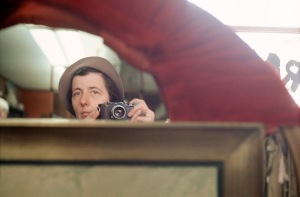By now, the story of Vivian Maier has become well known: the Chicago-based nanny who compulsively took photographs — hundreds of thousands of photographs — but either rarely printed the negatives or never had the film processed at all.
Toronto psychiatrist Dr. Katalin Margittai watched the documentary of John Maloof’s extraordinary efforts to find out who Vivian Maier was (the Academy Award-nominated “Finding Vivian Maier”), and made several diagnoses. She published them in an article in the February issue of the Chronicle of Neurology & Psychiatry (article not available online).
For those who have wondered why Maier took all those pictures but never developed the film, Dr. Margittai’s answer is that she suffered from a new type of hoarding: hoarding moments in time.
“Vivian was collecting slices of life, moments in time,” writes Dr. Margittai, a psychiatric consultant at North York General Hospital who is also in private practice.
Vivian was collecting slices of life, moments in time. She did not need to see those pictures; she knew they were there, forever. —Dr. Katalin Margittai
“That she happened to be very talented at it was simply an ironic coincidence. She did not need to see those pictures; she knew they were there, forever—just like the mountains of newspapers that she collected, but would never reread.”
This type of hoarding is unlikely to be unique to Maier, Dr. Margittai adds. “Identifying this subtype of hoarding in our patients may lead to a correct though hitherto unsuspected condition in its sufferers, and allow us to better address their affliction.”
Dr. Margittai’s psychological post mortem also includes diagnoses of obsessive-compulsive disorder (to do with her germ-phobia and cleaning obsession), and possible childhood trauma or sexual abuse.
She clearly admires Maloof’s extraordinary detective work—across two continents and five years—but says that his “lack of formal psychological training hobbles an otherwise riveting unravelling.”
“Maloof’s insistence on portraying Maier as a romantic, mysterious photographic genius detracts from clearly seeing her tragedy,” she continues, “a supremely talented woman whose undiagnosed and untreated mental illness created suffering for herself and her charges, and almost deprived the world of a major artistic talent.”
It’s worth noting that in the bio at the end of article, Dr. Margittai says that in her spare time she “enjoys taking lots of photographs.”~TM

